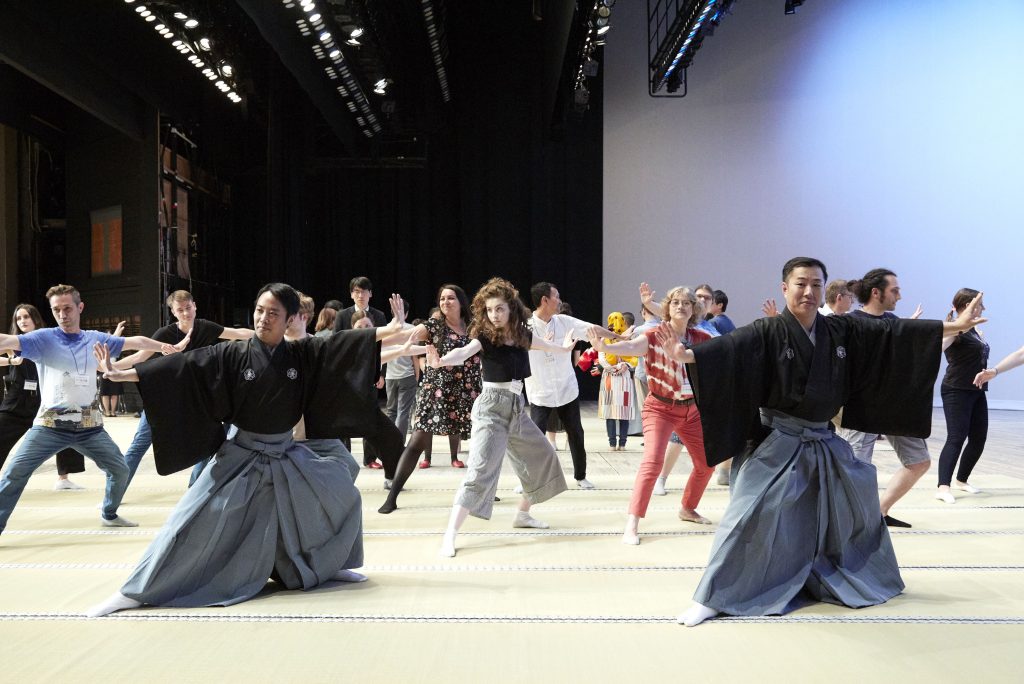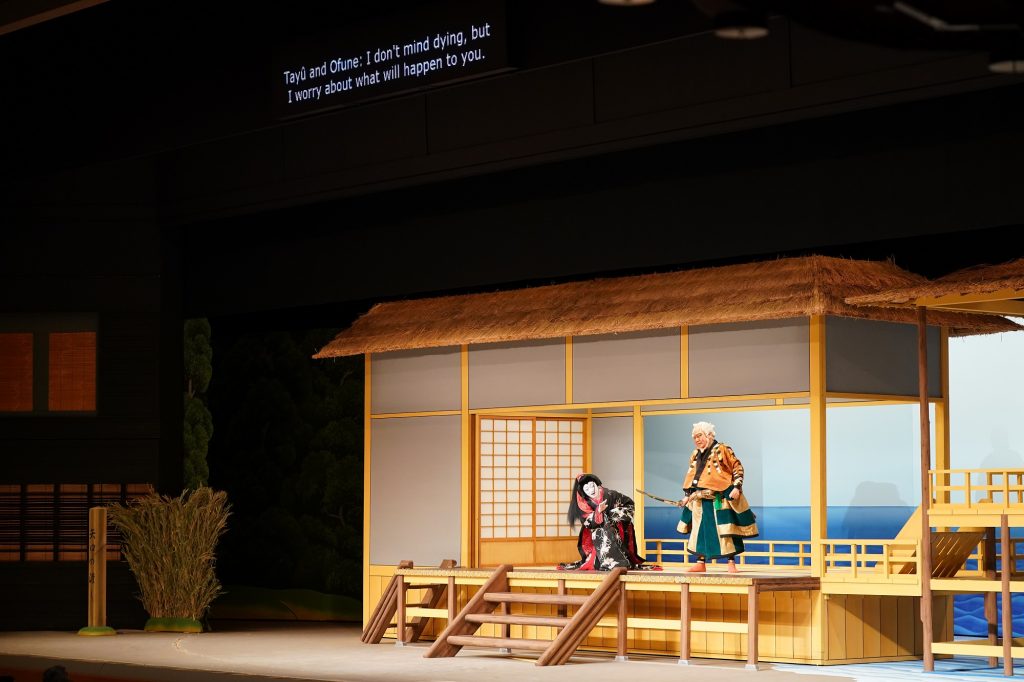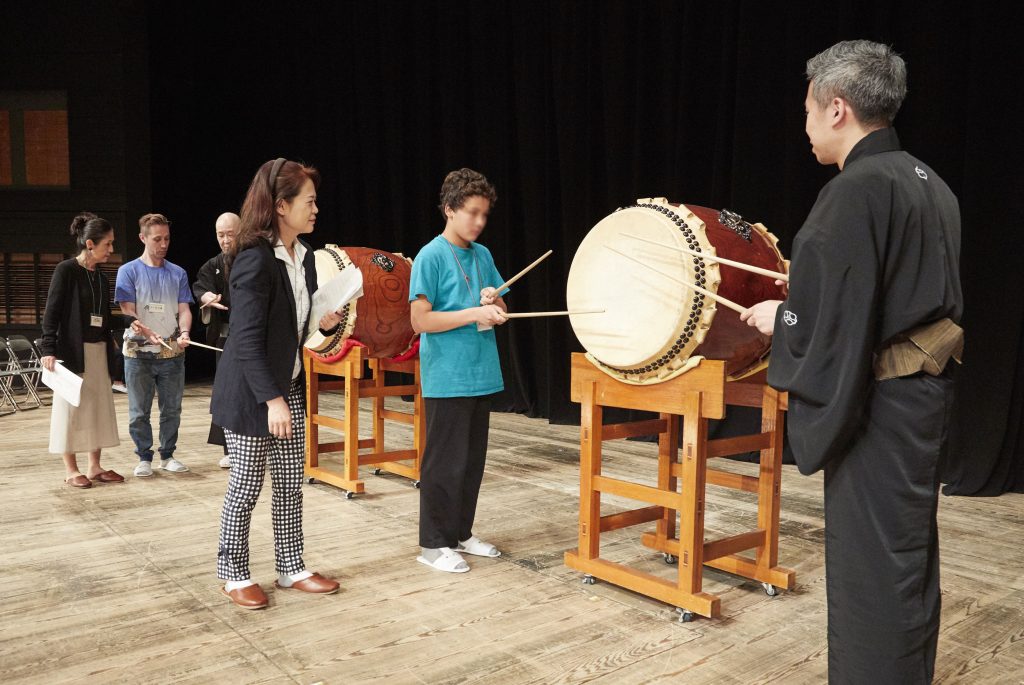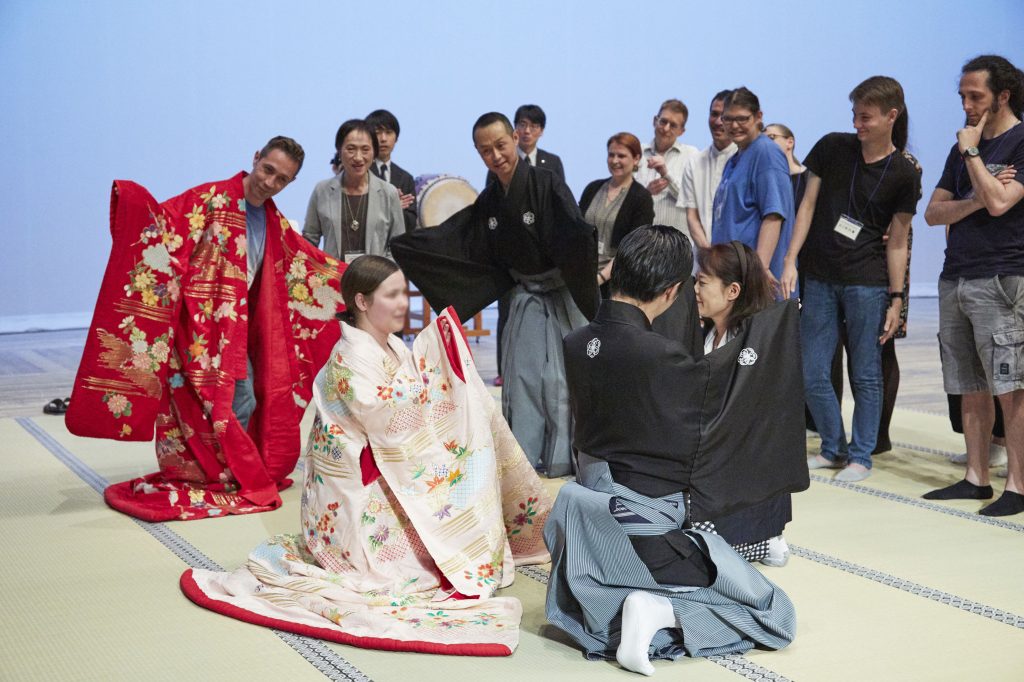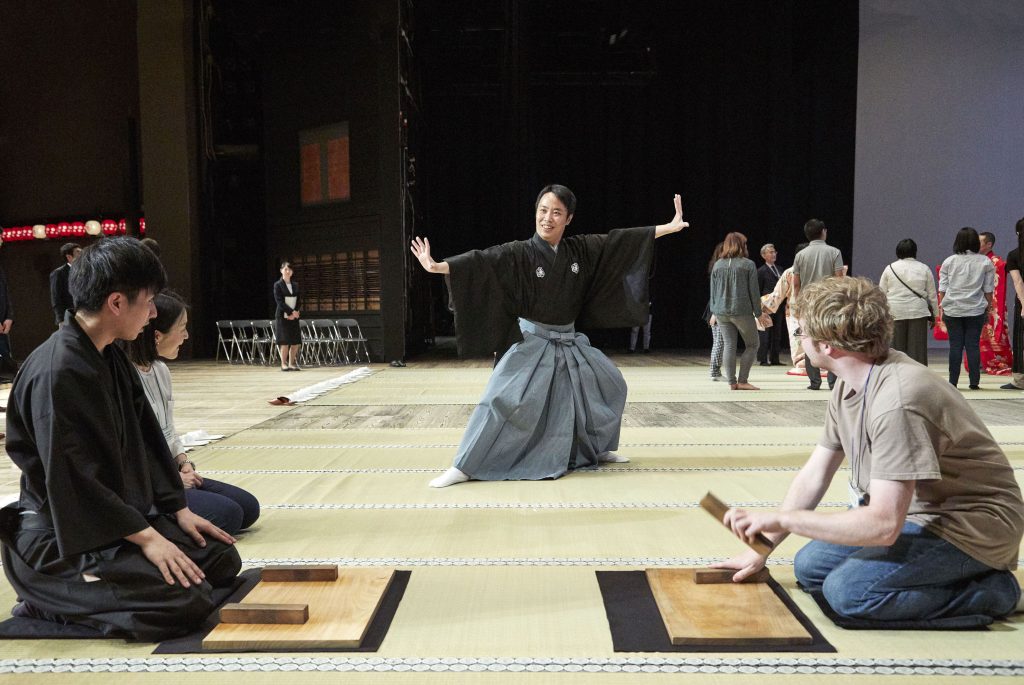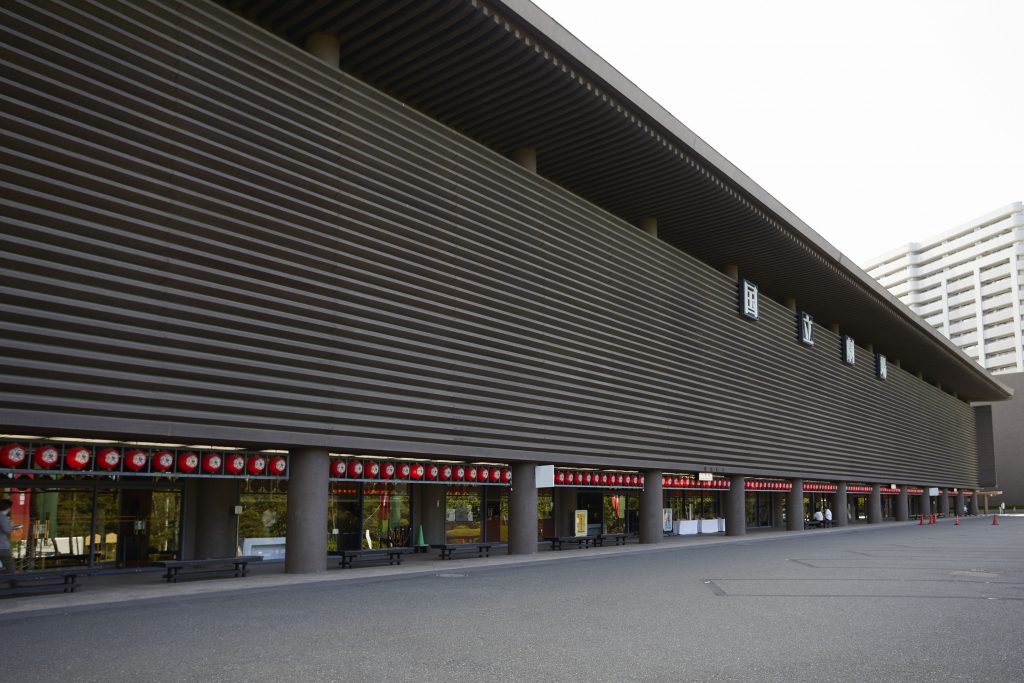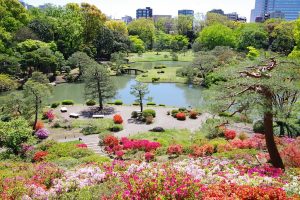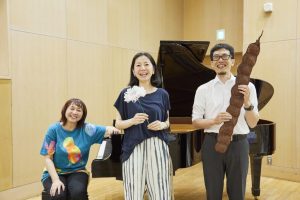The event began with a talk before the performance on “how to watch” Kabuki. This was a special version of Discover KABUKI that mixed English and Japanese. The talk began by introducing the role that sound plays in Kabuki, both with sound effects and shamisen-laden narration. Two audience members were then selected to help demonstrate several of the gestures unique to Kabuki staging. Finally, before the curtains went up, an overview of the story presented in the play was given in English.
The performed scene, “Tonbee Sumika no Ba,” is an excerpt from Shinrei Yaguchi no Watashi (Miracle at Yaguchi Ferry), a play which takes the medieval war chronicle Taiheiki (Record of the Great Peace) as its theme. The play takes up such universally human themes as love, filial piety, and obsession with money.
About 30 participants from the Discover KABUKI event also took part in the Kabuki Workshop for Foreigners. At the workshop, participants got a lesson on recreating the sound of waves on the large taiko drum, after which they had the opportunity to perform as tachiyaku (male role) and onnagata (female role). When dressed as onnagata, students learned the basic posture for these roles, as well as how to walk and behave as a female character in Kabuki. During the role-play session, participants struck mie poses in time to the beat of wooden clappers called tsuke. Unique to this form of theatre, Kabuki uses mie poses to express the feelings of the characters in the play. The tsuke sound effects are made by hitting a board called the tsuke-ita with two wooden blocks called tsukegi.
Classes on how to appreciate Kabuki (in Japanese)were first held in 1967, the year after the National Theatre opened. The Discover KABUKI program launched in 2015. The program’s gracious, attentive, and highly creative approach has ensured that these classes are so popular that they are always full.


